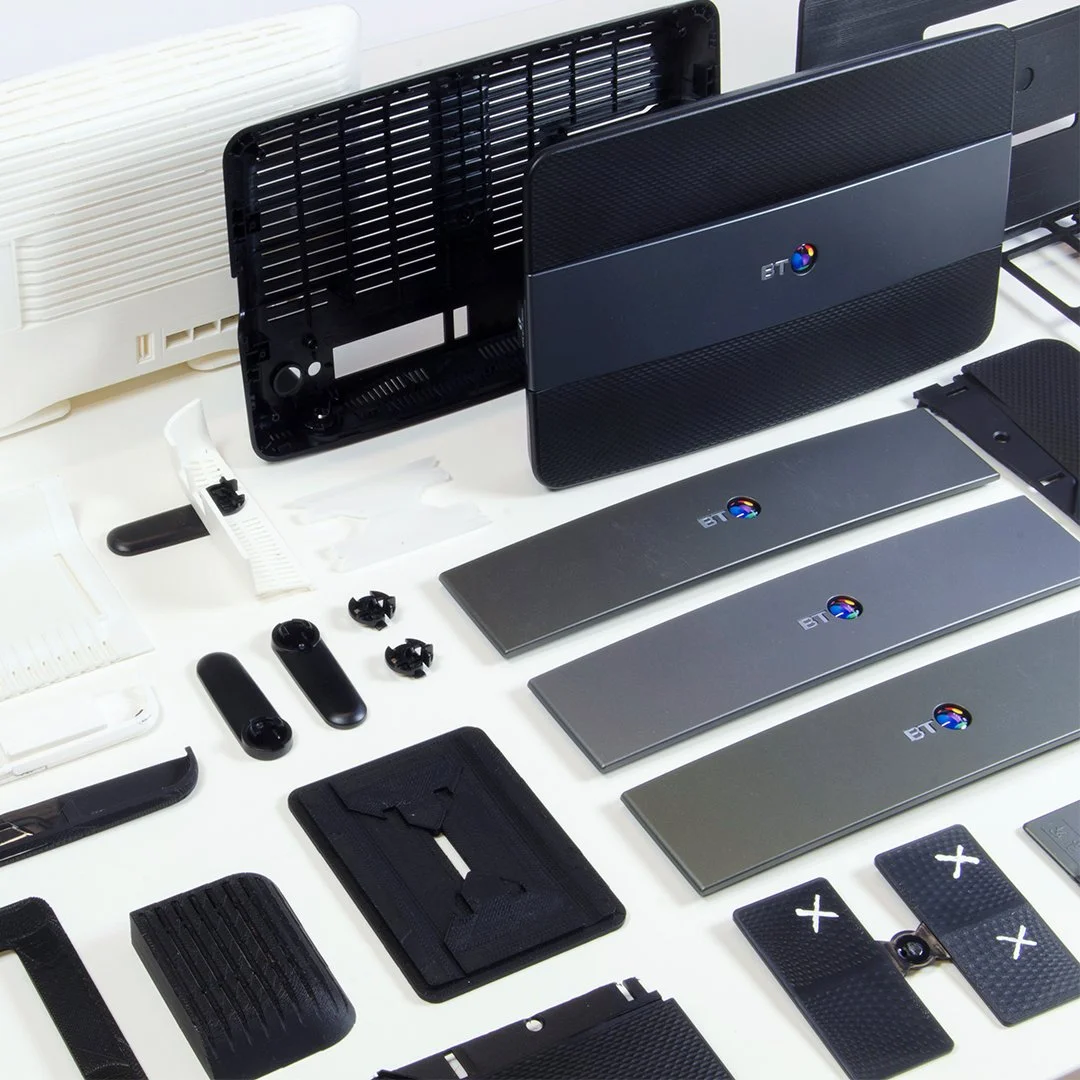Your Ultimate Guide to Successfully Launching a Product
Introducing a new product isn’t just about having a great idea. It’s a multi-faceted journey that blends creativity, strategy, and execution. Did you know that nearly 95% of new products fail? This stark statistic highlights the importance of a solid approach to product manufacturing and launching. At Alloy Design Agency, we believe in transforming innovative concepts into market-ready solutions.
To achieve this, you need a well-structured plan that guides you through every step, from the initial spark of inspiration to the moment your product hits the shelves. This guide will take you through the essential phases of getting your product made—starting with understanding what it truly means to launch a product.
As we navigate through the intricacies of product development, we’ll explore key preparations that set the foundation for success. You’ll discover the importance of thoughtful manufacturing strategies, the nitty-gritty of product specifications, and how to safeguard your new product against potential pitfalls. With our practical tips, you’ll learn how to choose the right manufacturing partner and ensure compliance with necessary regulations.
What makes this guide special? It’s packed with actionable insights tailored for professionals like you. Whether you’re an entrepreneur or part of a design team, our approach combines expertise with real-world experiences to deliver the information you need. Let’s dive in!
Understanding Product Launching
What Does it Mean to Launch a Product?
Launching a product means bringing an idea to life and introducing it to the market. But it’s more than just a release; it’s about connecting with your audience and delivering value that resonates.
Key Preparations for a Successful Product Launch
Preparation is key. Conduct thorough market research, develop a robust product specification, and ensure that your manufacturing process is well planned. These steps create a roadmap to navigate challenges and maximise your product’s impact.
Essential Considerations When Introducing a New Product
Be mindful of potential risks. Identifying market needs and understanding competitor landscapes can be game changers.
Common Risks and Challenges in Product Launching
Many new products fail due to lack of research, inadequate testing, or poor timing. Being aware of these risks is the first step to avoiding them.
The Importance of Launching New Products
Innovative products drive business growth and keep your brand relevant. Each successful launch enhances your credibility in the market.
The Manufacturing Journey
Why Thoughtful Product Manufacturing Matters
Every product requires meticulous planning and execution. From choosing the right manufacturing location to selecting an effective strategy, thoughtful decisions lead to superior outcomes.
The Product Manufacturing Process
Let’s break down the manufacturing process into manageable steps:
1. Preparing for Manufacturing
Preparation involves research, product validation, and feasibility studies. You need to know your market and audience.
2. Choosing the Right Manufacturing Location
Where you manufacture can impact costs and logistics. Weigh the pros and cons of local versus overseas options.
3. Selecting an Effective Manufacturing Strategy
Engaging directly with factories or using local agents—each has its own advantages and challenges.
4. Developing Comprehensive Product Specifications
A detailed product specification is your blueprint. Ensure it covers design, materials, and functionalities.
5. Safeguarding Your New Product
Intellectual property rights are essential. Protect your innovations to maintain a competitive edge.
6. Understanding Manufacturing Cost Considerations
Consider all costs, from setup to shipping. A clear financial picture ensures your product's viability.
7. How to Find a Manufacturer in the UK
Start with clear specifications and protect your ideas. The right manufacturer is key to your success.
8. Approaching Manufacturers: Best Practices
Build strong relationships through effective communication. It's vital for meeting your needs.
9. Criteria for Choosing a Manufacturing Partner
Evaluate potential partners based on experience, quality, and capacity.
10. Implementing Value Engineering
This process refines your product design to reduce costs without compromising quality.
11. Setting Up for Production: Tooling, Jigs, and Fixtures
Plan for the tools and equipment needed for production.
12. Navigating the Sampling Process
Ensure the final product meets your standards through careful sampling.
13. Ensuring Regulatory Compliance and Certifications
Know the regulations that apply to your product and ensure compliance.
14. Managing Manufacturing Production
Careful oversight during production is crucial to maintain quality.
15. Planning Supply Chain and Logistics
Effective logistics ensure timely delivery and cost control.
16. Ensuring Quality Control and Efficient Shipping
Quality checks and logistics are key to customer satisfaction.
Case Studies: Our Product Launch Success Stories
Explore real-life examples of how we’ve successfully guided products from conception to market.
FAQs on Product Manufacturing and Launching
-
Manufacturing and selling a product requires thorough planning and coordination, starting from ideation through to distribution. After solidifying your concept, you’ll develop a prototype, select a manufacturing partner, and refine your design for production. Once produced, you’ll need to consider packaging, distribution channels, and marketing strategies to bring your product to market effectively. Strategic planning at each stage helps streamline the process and ensures your product reaches the right audience.
-
Manufacturing involves several critical steps, including sourcing materials, planning production schedules, quality control, and ensuring that all components fit your product’s specifications. It’s essential to have a clear production roadmap, covering every detail from materials procurement and assembly to testing and packaging. Partnering with a reliable manufacturer who can meet your quality standards and timelines is key to a successful production process.
-
Sustainable manufacturing focuses on reducing environmental impact through practices like using eco-friendly materials, optimising energy use, reducing waste, and designing for recyclability. Consider sourcing materials from responsible suppliers, minimising packaging, and choosing energy-efficient manufacturing processes. Sustainable practices not only reduce your product’s carbon footprint but can also appeal to environmentally conscious consumers, boosting your brand’s reputation.
-
Manufacturing costs vary widely depending on materials, production complexity, labour, tooling, and logistics. Costs typically include raw materials, labour, assembly, quality control, packaging, and shipping. Don’t forget to budget for potential prototypes and testing as well. It’s crucial to get a detailed breakdown from your manufacturer and consider all possible expenses to avoid unexpected costs.
-
Manufacturing timelines depend on factors like product complexity, order volume, and supplier availability. On average, it can take anywhere from a few weeks to several months, from design finalisation to delivery. Timelines may include prototype development, quality testing, initial production runs, and full-scale manufacturing. Clear communication with your manufacturing partner helps set realistic expectations and minimise delays.
-
Quality control is essential throughout manufacturing, from initial prototypes to full-scale production. Use a clear set of specifications, and implement regular inspections during production to catch any potential issues early. Working with a manufacturer experienced in your product type and setting up an agreement for quality checks at various stages helps ensure that the final product meets your standards.
-
When selecting a manufacturing partner, consider factors like experience, reliability, location, and communication. Look for manufacturers with experience in your product category, who understand your quality standards, and can meet your budget and timeline. Visiting the factory (if feasible), requesting samples, and checking client references can provide additional insights into their capabilities.
-
Legal requirements vary based on your product category and target market. Common regulations include safety standards, labelling requirements, and certifications (such as CE marking in the EU). It’s essential to research the legal requirements for your specific product and ensure compliance before manufacturing and distribution. Consulting with a legal expert or regulatory advisor can help navigate these obligations.
-
Protecting your IP is crucial, especially if you’re working with external manufacturers. Consider securing patents, trademarks, and design registrations for your product. Additionally, non-disclosure agreements (NDAs) and detailed contracts specifying ownership of designs can help safeguard your IP and prevent unauthorised use.
-
A distribution strategy outlines how you’ll get your product from manufacturer to customer. It involves selecting distribution channels (such as e-commerce, retail, or wholesale), determining logistics (including warehousing and shipping), and deciding on pricing strategies. A solid distribution strategy is essential to ensure your product reaches customers efficiently and at the right cost.
-
Pricing your product involves considering manufacturing costs, marketing expenses, distribution fees, and desired profit margins. Additionally, researching competitors and understanding your target market’s spending habits can help establish a competitive yet profitable price. Aim for a balance where the price reflects your product’s value while remaining attractive to customers.
-
Packaging serves multiple purposes—it protects your product during shipping, provides branding opportunities, and influences customer perception. Sustainable packaging can appeal to eco-conscious consumers, while well-designed packaging can enhance unboxing experiences. Packaging decisions should align with your brand and meet any regulatory requirements for safety and labelling.
-
Creating demand requires effective marketing, starting with a clear brand message and identifying your target audience. Use digital marketing, social media, influencer partnerships, and possibly trade shows to build awareness. Offering introductory promotions or product trials can also encourage initial interest. Customer reviews and testimonials are powerful for building trust and driving sales.
Further Reading You Might Find Helpful
Exploring Manufacturing Cost Considerations
Delve deeper into cost factors and strategies.
Understanding the Manufacturing Preparation Phase
Learn more about the foundational steps in manufacturing.
Essential Tips for Manufacturing and Selling Products
Discover more ways to enhance your product’s success.
The Role of Value Engineering in Product Development
Conclusion: Ready to Launch Your Product?
With careful planning and execution, you can transform your idea into a successful product. Let’s get started!
Choosing the right design agency isn’t just a business decision; it’s a strategic step toward creating a product that resonates, performs, and lasts. If you’re ready to get started, contact Alloy today. We’d love to help you turn your idea into a product that not only looks great but works brilliantly too.










